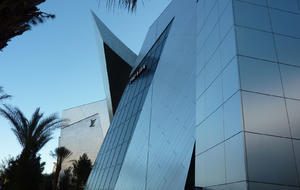Limesol 45 transforms effluent treatment at specialist Metal Finishing company
 The treatment of effluent has been a major concern for the Rimex Metals Group. Specialists in metal finishing and architectural metals Rimex produces surface finishes on stainless steel and other metals. The company has manufacturing facilities throughout the world and a global distribution network.
In the UK, the company traditionally used low solids content lime suspension to treat effluent which is collected in two separate sumps, one for chromic acid based and the other for phosphoric/sulphuric based effluent.
The treatment of effluent has been a major concern for the Rimex Metals Group. Specialists in metal finishing and architectural metals Rimex produces surface finishes on stainless steel and other metals. The company has manufacturing facilities throughout the world and a global distribution network.
In the UK, the company traditionally used low solids content lime suspension to treat effluent which is collected in two separate sumps, one for chromic acid based and the other for phosphoric/sulphuric based effluent.
Considerable savings in time and money
By replacing the incumbent lime suspension with the high solids content of Limesol from Alkali Solutions, the company has made considerable savings and introduced a less hazardous and more environmentally friendly product.
Moving to a reagent that is 2.5x stronger in active ingredient reduces volume usage and repair and maintenance costs, in addition transport costs are greatly reduced a staggering 60% reduction in road miles is achieved by utilising a longer lasting reagent that requires fewer deliveries.
Alternative Delivery Methods

Alkali Solutions are currently developing a mini-bulk delivery system, capable of delivering 4-6,000 litre batches via pump over at any one time, this will greatly reduce the time taken by the current method that involves delivery of IBC’s and the transfer of their contents on site, typically over a period of hours.
As an economic alternative to IBC’s, mini-bulk delivery offers a less time-consuming delivery process and due to the fact that IBC’s have a limited cycle of use, costs can be reduced for the final delivered product.
Effluent Treatment Process
Firstly, the effluent containing chrome is reduced from hexavalent chromium using sodium metabisulphite. The reaction time is pH dependent and works more rapidly under acidic conditions. Due to the sulphate process the pH is controlled to around pH1.3 with hydrochloric acid.
All the effluent is dosed with an aluminium reagent before being neutralised with Limesol. This is a two-step process, with the final pH being around pH11.5, found to be the optimum pH for the formation of calcium aluminium sulphate oxide. The effluent containing calcium, aluminium and sulphate ions, is then passed through an ultrasonic reactor. The reaction chemistry and kinetics are altered so that the sodium oxide is formed. This material is a very fine precipitate. Epofloc L1-R is then dosed to ensure heavy metals removal but it also starts the flocculation process.
The effluent is them pumped to a lamella settler for separation of solids and liquid. A flocculant is added en-route to the lamella. Phosphate is finally removed by precipitation with aluminium and calcium. The final results for removal are dependent on dosage rates but they can be as high as up to 99.7 percent for sulphate and heavy metals and up to 99.9 percent for phosphate.
